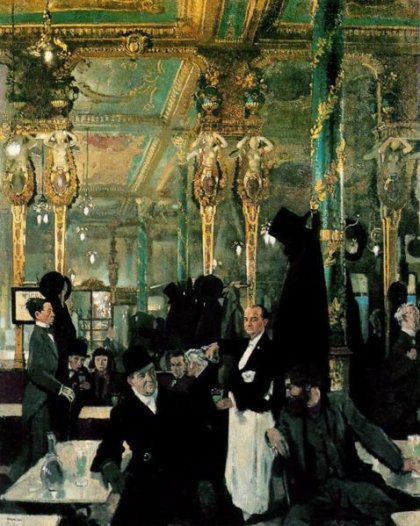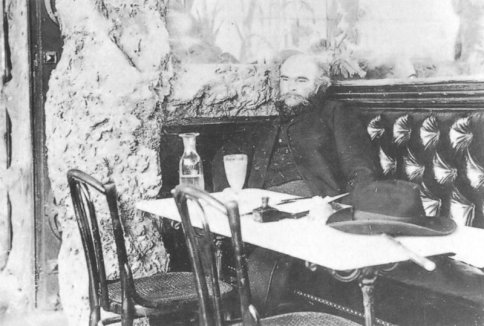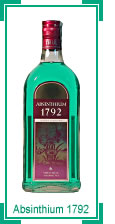Oscar Wilde on the effects of absinthe drinking. I wonder what brands of absinthe were served at the Cafe Royal in the high days of real absinthe?Anyway it seems that Oscar was actually floating out of the Cafe Royal – as he describes the tulip heads brushing against his shins. However, perhaps he wishes to suggest that the flowers were only just sprouting from the floor as the impatient waiter poured water from the can. The watering-can is even perhaps an interesting metaphor for the time honoured fashion of pouring water into absinthe? The passage seems to be very precise concerning the three stages of absinthe drinking:
At Oscar Wilde told me-in all his great heavy drawl-of the three stages of Absinthe drinking. The first stage is like ordinary drinking, the second when you begin to see monstrous and cruel things, but if you can persevere you will enter in upon the third stage where you see things that you want to see, wonderful and curious things. One night I was left sitting, drinking alone, and very late in the Cafe Royal, and I had just got into this third stage when a waiter came in with a green apron and began to pile the chairs on the tables. “Time to go, sir,” he called out to me. Then he brought in a watering-can and began to water the floor.“Time’s up, sir. I am afraid you must go now,sir” –“Waiter, are you watering the flowers?” I asked, but he didn’t answer. “What are you favourite flowers,waiter” I asked again. “Now,sir, I must really ask you to go now, time’s up,” he said firmly.“I’m sure that tulips are your favourite flowers,” I said, and as I got up and passed into the street I felt-the-heavy-tulip-heads-brushing against my shins”
Absinthe and Oscar by John Fothergill
Did you know?
(i)The Oraon tribals of West Bengal, India, were reported to smoke leaves of the thujone-containing (Uniyal et al. 1985) Artemisia nilagirica (Clarke) Pamp. as an entheogen (Pal & Jain 1989) An entheogen is a substance with psychoactive properties often used in a religious or shamanic context.
(ii) The French define absinthe as hallucinogène:
SUBSTANCES PSYCHOACTIVES ET PHARMACODEPENDANCE http://inseme.free.fr/LES%20SUBSTANCES%20PSYCHOACTIVES%20web.htm



















